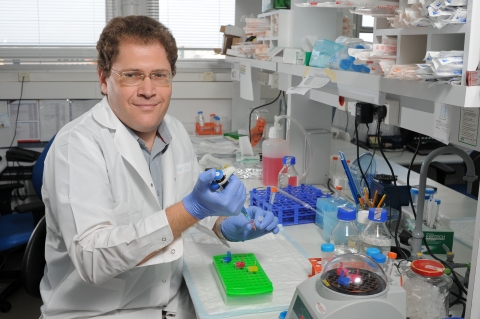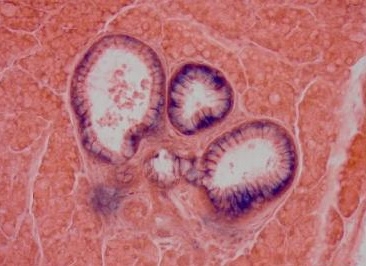Fountain of youth?
The anti-aging promise of p21
Features

Twenty-one is the number typically associated with the age at which a person enters adulthood. But thanks to new research being done at the Weizmann Institute, 21 might take on the opposite connotation: as the designation for a molecule that controls aging in body tissues and, when tweaked, can serve as a veritable “fountain of youth.”
Recent work by Prof. Valery Krizhanovsky of the Department of Molecular Cell Biology has revealed that a protein called p21 might play a leading role in aging—by mediating the levels of a special class of age-associated cells that accumulate in body tissues. This discovery leads to a tantalizing question: Can we manipulate the activity of p21 to delay the aging process?
The power of p21 is in its ability to affect the cellular life cycle. Prof. Krizhanovsky has discovered that p21 is essential for maintaining senescence—a “zombie-like” state of the body’s cells in which they permanently stop dividing, yet don’t die. The natural build-up of senescent cells—something akin to biological garbage that hasn’t been taken out—is a hallmark of aging tissues. It is also associated with a number of age-related diseases, including cancer.
In a study published in The EMBO Journal, Prof. Krizhanovsky reports that it is possible to use genetic techniques to block the synthesis of p21, and that this manipulation “re-boots” biological activity in cells that have entered a zombie-like state. Significantly, when p21 synthesis is reduced, this leads to an accumulation of DNA damage, a development that leads to these cells’ demise. As a result of Prof. Krishanovsky’s intervention, the “zombie” cells that clog up tissues and cause age-related maladies can finally die a natural death.
Clearing tissues of senescent cell build-up is more than just taking out the garbage, however—it can also significantly improve tissue health. In the p21-deficient mice used in Prof. Krizhanovsky’s experiments, elimination of senescent cells in the liver reduced collagen production and fibrosis, phenomena associated with an increased risk of liver cancer, and, in advanced cases, the need for a liver transplant.
These findings add to Prof. Krizhanovsky’s previous work, in which he advanced our understanding of senescence by developing the first-ever method for counting such cells in tissues. His approach, which involves staining tissues for molecular markers of senescence then imaging them with advanced techniques, revealed a huge jump in senescent cells over time. In young mice, no more than 1% of cells in any given organ were senescent; but in two-year-old mice, the level of senescent cells in some organs rose to 15%.
“Our experiments showed how p21 is responsible for maintaining the viability and retention of senescent cells in tissues,” Prof. Krizhanovsky says. “This suggests that the elimination of senescent cells by p21 inhibition represents a promising strategy for promoting tissue fitness, improving health, and increasing lifespan.”
Prof. Valery Krizhanovsky is supported by the Rising Tide Foundation, Mr. and Mrs. Bruce Kanter, and the European Research Council.

Prof. Valery Krizhanovsky

Senescent cells in the pancreas







